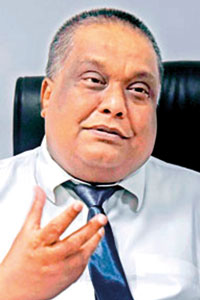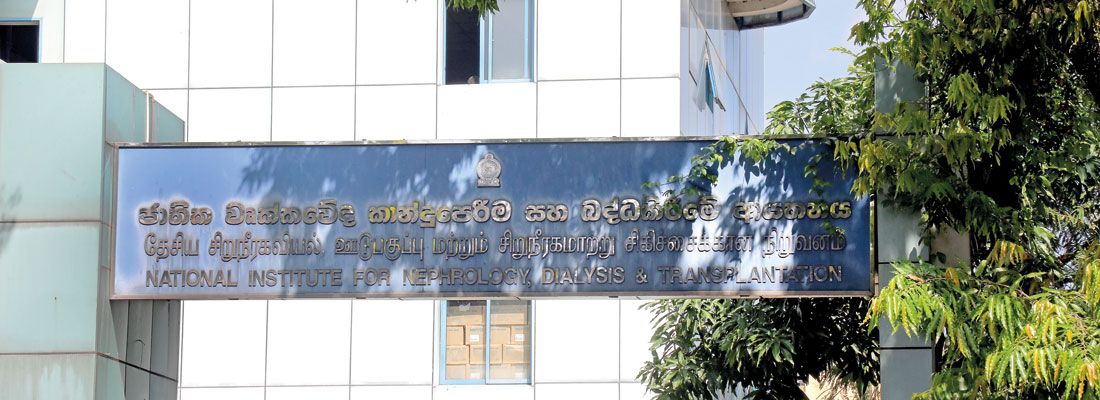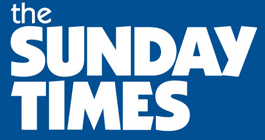News
Dialysis care deficiency prompts calls for costs and equipment review
View(s):By Nathara Abeywickrema
The Dialysis Unit at the National Institute for Nephrology, Dialysis & Transplantation (NINDT) in Colombo has announced that it will limit the number of dialysis sessions provided per person to 60 due to a shortage of machines that are functioning.
As a result, patients needing additional treatment will have to seek costly private sector care.
The Sunday Timesvisited the NINDT and found that patients relying on the institute for life-sustaining dialysis treatments have expressed concerns about the new cap, citing the high costs of private treatment.

Dr. Rukshan Bellana
Dialysis filters waste, excess fluids, and toxins from the blood when kidneys fail. It begins with haemodialysis, where a machine filters the blood, followed by peritoneal dialysis, using the peritoneal membrane. Transplantation may then offer a permanent solution by transplanting a donor kidney to restore function.
A health official of NINDT said that the limitation is due to the insufficient number of dialysis machines and the heavy demand for services. The NINDT, one of the country’s leading state-run dialysis centres, caters to a significant number of patients suffering from Chronic Kidney Disease (CKD) and other renal complications. The increased burden on its resources has made it difficult to meet the growing demand.
The NINDT operates 20 dialysis machines serving 1,600 patients per month, but with two currently out of service, only 18 are functional. As a result, the institute has imposed a lifetime cap of 60 sessions per patient, compelling many to seek costly private medical care.
The elderly are often given lower priority when there are more younger patients, prompting doctors to make difficult decisions and ration care.
A single dialysis session at a private hospital typically costs between Rs. 10,000 and Rs. 15,000, a significant financial burden for many patients, particularly those from low-income backgrounds. The lowest rates are available at Sri Jayewardenapura General Hospital, a semi-government facility, where costs range from Rs. 8,000 to Rs. 12,000.
He emphasised the need for the ministry to improve its screening processes and prioritise the prevention of non-communicable diseases (NCDs). Improved management of stage one CKD patients, expansion of existing facilities, and greater investment in health education programmes through partnerships with stakeholders were among his recommendations.
He called for the introduction of price regulations for dialysis treatments, citing a comparison with India’s Apollo Hospital, where a session in 2019 cost Rs. 1,000. He noted that with proper evaluation, Sri Lanka could potentially reduce costs to Rs. 2,300–Rs 2,400 per session, aligning with the Indian model when adjusted for currency values and local conditions.
He said that the NINDT has asked for 10 additional dialysis machines but believes bureaucratic delays have hindered the process. While President Anura Kumara Dissanayake has launched separate campaigns for various diseases, he noted that CKD has not received similar attention.
The dedicated renal unit is not functioning effectively, and no review meetings are held to assess progress. He suggested the introduction of a ‘transplant coordinator’ to do a thorough analysis of patient numbers and treatment demand, factoring in the unofficial rationing that doctors are often forced to carry out.
The health official noted the space constraints and need for expansion.
He said that Public-private partnerships (PPPs) could significantly improve the efficiency of dialysis treatments at the NINDT by addressing equipment shortages, reducing wait times, and improving services.

NINDT: The new cap on the number of dialysis sessions has raised concerns among patients who can ill afford to seek treatment privately. Pix by M. A. Pushpa Kumara
With private sector investment, the institute could acquire more dialysis machines, ensure timely maintenance, and serve more patients. Streamlined management and technological support from private partners would also help optimise scheduling, minimise disruptions, and provide better patient care. By reducing dependence on limited public resources, PPPs could make dialysis treatments more accessible and sustainable, ultimately easing the financial burden on patients.
He revealed that while the NINDT management had previously proposed this initiative, it was discouraged by certain trade unions at the time.
He said that advocacy groups have called on the Ministry of Health to allocate more machines and increase funding for state-run dialysis facilities. They warn that without immediate intervention, many patients could face severe health consequences or be forced to discontinue treatment.
He noted that the haemodialysis unit, equipped with 18 advanced machines, provides life-saving treatment for kidney disease patients, conducting 18,573 sessions annually. In 2023, one unit recorded 9,169 sessions (764 per month), peaking in May and declining in November.
Another unit conducted 7,398 sessions (616 per month), with a peak in July and a dip in November. A third unit carried out 2,214 sessions (184 per month), with the highest in August and the lowest in January. May had the highest total sessions (1,661), while February had the fewest (1,361). The unit’s multidisciplinary team also offers emotional support and educational resources to improve patient well-being.
Mrs. W.T.J. Fernando, a transplant patient from Moratuwa who has been receiving treatment at the NINDT for five years, expressed her appreciation for the care provided by the institute’s team. She suggested that expanding the facility and adding more machinery would improve the experience, allowing patients to have a smoother, hassle-free treatment process.
Meanwhile, the Deputy Director of the National Hospital of Sri Lanka (NHSL), Dr. Rukshan Bellana, said that due to inadequate capacity, dialysis cycles are limited to 50 per patient over the lifetime. This has created an alarming situation.
As a solution, he urged the government to allocate budgetary support for using private hospitals to treat patients of state hospitals.
A nephrologist with the Ministry of Health, who wishes to remain anonymous, emphasised the importance of using the budget for free healthcare efficiently and methodically. He stressed the need for collaboration among all stakeholders, along with a well-structured plan to streamline distribution of medication. Additionally, he called for the establishment of a nationwide ‘Disease Donor Transplantation Programme’ to regulate the entire process.
Ajit F. Perera, social worker and chairman of the Kidney Transplant Support Foundation, criticised the government for failing to support patients, often directing them to the private sector. He urged the government to explore alternatives, such as fostering stronger partnerships to encourage private contributions.
As concerns mount, healthcare authorities are expected to explore potential solutions, including increasing machine capacity, expanding services to other government hospitals, or introducing subsidised treatment options for affected patients. Until then, those in need of dialysis have no certainty about their future care options.
The best way to say that you found the home of your dreams is by finding it on Hitad.lk. We have listings for apartments for sale or rent in Sri Lanka, no matter what locale you're looking for! Whether you live in Colombo, Galle, Kandy, Matara, Jaffna and more - we've got them all!

